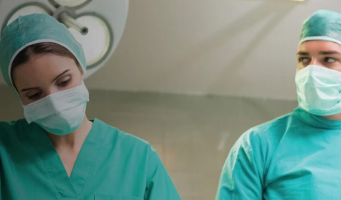Anaesthesia Fundamentals | Anatomy | Facial Skeleton



Facial Skeleton
Session overview
Description
This session describes the bones of the facial skeleton and skull vault. The important muscles that move the mandible are described. The classification and positions of fracture lines commonly seen following trauma to the face and surgical osteotomy are also covered.
Learning objectives
By the end of this session you will be able to:
- Identify the bones which comprise the facial skeleton and skull vault
- Define the differences in the neonate
- Locate the fontanelles
- Recognize the articulation of the lower jaw
- Identify the positions of the foramina through which nerves emerge
- Recognize the anatomy and function of the temporomandibular joint
- Identify the muscles which move the mandible
- Define the Le Fort classification of fracture lines and osteotomies
Prerequisites
Before commencing this session you should complete the following:
- Module 07a/Respiratory system/Anatomy of the oral cavity, pharynx and larynx (001-0556)
The human face is deeply embedded in the psychology of our interactions with one another.
Human identity relies on the face more than anything else, and although all faces are anatomically the same, we recognize individuals we know instantly from the 6.6 billion people who currently make up the world population. Except for monozygous twins, no two human faces are identical.
This session explains the integrity of the bony facial skeleton and the skull vault, its function in mastication and support of the musculature.
- Acute Medicine | Chest pain 01 knowledge A
- Posted By eIntegrity Healthcare e-Learning
- Posted Date: 2025-01-26
- Location:Online
- This session provides an overview of ischaemic electrocardiograms (ECGs) in acute medicine. It is not intended to teach how to interpret ECGs, but to understand the underlying coronary anatomy relative to their interpretation.
- Acute Medicine | Cardiorespiratory arrest 02 knowl...
- Posted By eIntegrity Healthcare e-Learning
- Posted Date: 2025-01-26
- Location:Online
- This session explains the pathophysiology and aetiology of hypothermia in adult patients and the way they present.
- Acute Medicine | Breathlessness 18 knowledge B
- Posted By eIntegrity Healthcare e-Learning
- Posted Date: 2025-01-26
- Location:Online
- This session describes how to evaluate, investigate and plan the management of a patient presenting with breathlessness due to anaemia.
- Acute Medicine | Breathlessness 18 knowledge A
- Posted By eIntegrity Healthcare e-Learning
- Posted Date: 2025-01-26
- Location:Online
- This session will look at the classification of anaemia based on red cell indices and the associated factors leading to breathlessness in an anaemic patient.
- Acute Medicine | Breathlessness 13 knowledge A
- Posted By eIntegrity Healthcare e-Learning
- Posted Date: 2025-01-26
- Location:Online
- This session reviews the diagnosis and treatment approaches for patients with breathing pattern disorders.


